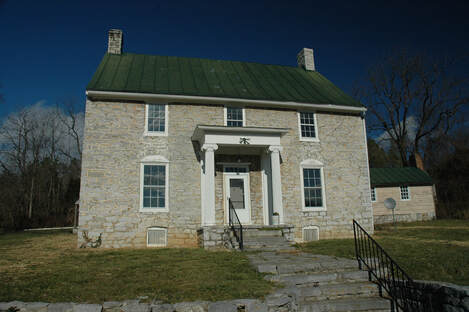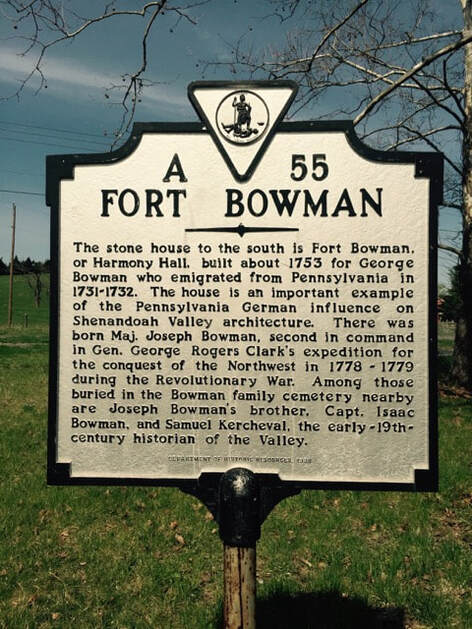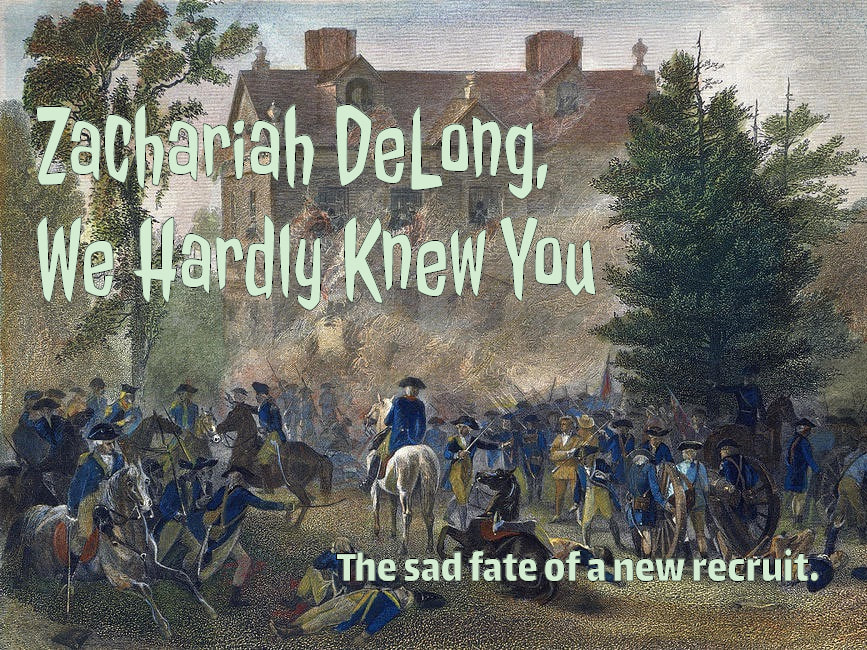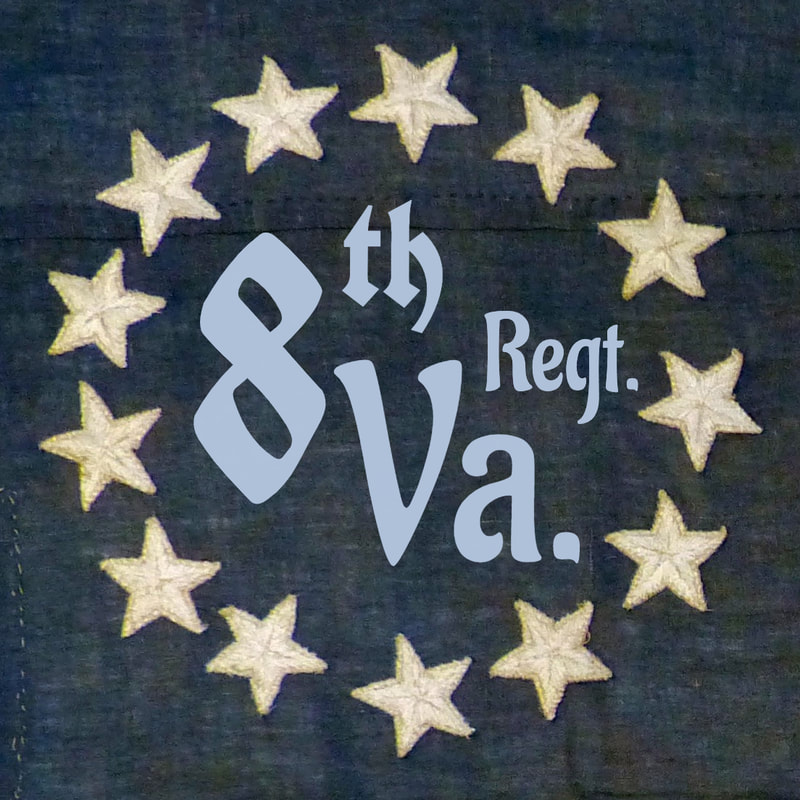 Hidden in the woods down a long, steep and rocky dirt road near the intersection of Interstate 66 and U.S. Route 11 is a very old Virginia house that seems out of place. If you have an eye for regional architecture, you will notice that it looks much more like a Pennsylvania Dutch farmhouse than a Virginia plantation house. The house was built by George Bowman, a son-in-law of Jost Hite who led George and their extended family to the Shenandoah Valley from Pennsylvania in the 1730s. The house was long believed to have been built in the 1750s but may not be quite that old. The symmetrical features and chimney placements show concessions to dominant English architectural style of the time (Georgian). This is the house Colonel Abraham Bowman grew up in. George was his father. It is a very important early example of Pennsylvania German architecture in the Shenandoah Valley. The Laurence Snapp House (note the central chimney), which is nearby at Toms Brook, is another. The house has been called “Harmony Hall” since before the Revolutionary War. It is sometimes, however, called “Fort Bowman” because according to tradition it was used as a fort during the French and Indian War. Depending on the house's actual age, that history may now be in question.  A nearby Virginia historical marker mentions Abraham's brother, Joseph, but does not mention Abraham. There were in fact four brothers who lived here who served in the Revolutionary War in various capacities. They all had reputations as excellent horsemen, for which reason the siblings were known as the "four centaurs of Cedar Creek" after the nearby stream. In 2009, Maral Kalbian and Margaret Peters gave a presentation on the house’s history. Parts 1 through 3 cover the chain of property ownership. If you are not interested in that, you may want to start watching with part 4--which is embedded below. The house is now on property that is part of Cedar Creek & Belle Grove National Historical Park. Two more of Abraham Bowman's homes survive. The log house he built after moving to Kentucky in 1779 survives and has been restored, and the much larger plantation house he built after prospering there is also still standing. That house, now known as Helm Place, was later the home of Abraham Lincoln's sister-in-Law (Mary Todd Lincoln's sister). (Updated August 20, 2020) More from The 8th Virginia Regiment
20 Comments
CPL. Randall L. Bowman
12/1/2019 10:35:43 pm
My ancestry: Me. Max L. Bowman; Frank W. Bowman, William H. Bowman; William Bowman, William Bowman; John Bowman; Isaac Hite Bowman, George Bowman. I am the family historian for my branch of my family, Would love to hear from my fellow relatives, as we are a vast family now.
Reply
12/2/2019 10:41:37 pm
Randall—can you send me an email over the 8thVirginia.com contact page web form? I’d like to correspond with you.
Reply
Katie
10/25/2020 06:49:02 pm
I am descended from Isaac Bowman as well. My great-grandfather was Walter V. Bowman. It's fascinating to learn more about the history of the house.
Reply
Adria Bowman
7/8/2021 08:39:17 pm
Hi!
Reply
8/4/2022 11:26:28 am
Adria, there is a fairly new BOWMAN group on FB that deals with our side of the Bowman tree. Laura Jones is the creator and admin of this group. 7/14/2021 11:14:57 pm
George Adams Bowman, married to Mary Maria Elisibetha Hite, was my 8th great-grandfather.
Reply
Ralph R. Bowman
7/15/2021 10:08:40 am
So is George A. Bowman my 8th Great-Grandfather also or my 7th Great-Grandfather?
Adria Bowman
7/15/2021 10:21:24 am
George Bowman was my 6th great grandfather!
Lori Hoffman
7/15/2021 09:58:57 pm
Ralph, your 7th I think.
George Hoffman
8/22/2022 01:45:59 pm
Lori, I'm intrigued. I don't recognize your name, but since I'm a Hoffman too, I wonder how many ways we may be related. My 3rd great-grandmother, Mary (Chinn) Bowman, married to Isaac Bowman, is buried in the graveyard at Fort Bowman, but we are actually related through my father's MOTHER, who was a Boyer, and whose own mother was a Hite.
Cheri Moats Sperl
10/24/2021 01:40:04 pm
Randall, here is how we are related:
Reply
Caroline Jordan
11/11/2021 05:17:49 am
I am a great grand daughter
Reply
Susan Caringer Bernier
8/2/2022 09:41:58 am
I have been busy doing genealogy research and just discovered I seem to be a descendant of George Bowman as well. I do not share the family name and the family tree zigs and zags a bit (as any family tree does). So, stay with me…. Here is my connection: Me - Mabel Alexander Caringer - David Alexander - Bessie L. Pinto Alexander - Laura Bowman Pinto - Judge James R. Bowman - James Bowman - John Bowman - John Jacob Bowman - George Bowman. I have had fun doing the genealogy research and would love to learn more about the family history.
Reply
William Perry
12/8/2020 02:21:21 pm
I am George Bowman is my 7th great grandfather. I am related through his daughter, Sarah Bowman Wright. I would be interested in learning more. As a side note, I had long suspected this family line was correct, but through the help of a professional genealogist I was able to verify and prove my link. Thank you.
Reply
Madelyn Rodriguez
5/10/2021 09:32:29 pm
I lived in this house for about a year. I want to say 1989 or 1990. My parents cared for Mr O’Connell who pended the home at the time. I have so many memories there. My bedroom was the big room on the 2nd floor with 2 entrances a fire place and open bathroom. I’d love to bring my kids to see the property!
Reply
Lori Hoffman
7/15/2021 10:00:51 pm
Adria, the Bowman Family Group https://www.facebook.com/groups/449005389690484
Reply
Cheryl Hawkes Wettstein-Bowman
4/8/2022 08:06:33 pm
My husband’s grandfathers are these Bowman’s. This is a great family who contributed much to USA history and were outstanding men!
Reply
11/27/2023 03:02:10 am
In this article, we will share with you what you need to know about Cyprus house for sale and TRNC real estate investment.
Reply
Leave a Reply. |
Gabriel Nevilleis researching the history of the Revolutionary War's 8th Virginia Regiment. Its ten companies formed near the frontier, from the Cumberland Gap to Pittsburgh. Categories
All
Archives
June 2024
© 2015-2022 Gabriel Neville
|




 RSS Feed
RSS Feed